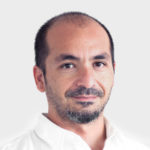Digital representations of real objects (digital twins) are becoming increasingly important, and not just since the Corona pandemic, where the benefits of “immersive” work environments were first demonstrated on a global scale. Immersive is the term used to describe immersion in digitally visualized worlds in which it is possible to access and interact with data or digital twins of objects.
Nevertheless, the usability of these immersive analysis and interaction methods is currently not always optimal because the digital methods follow different logics than the physical, familiar environment.
In this research project, we are working to improve such experiences and provide personalized and user-friendly digital experiences with data and analytics derived from a real-world environment. Both for individual users and for entire teams in dislocated collaboration.

